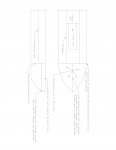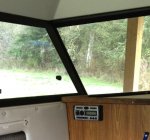Re: De-Lam
Thanks for the reply guys. The rivets are attaching the top to the hull and are then tabbed over...this looks like it may be a challenge due to the prep work of grinding the approx 6" tabbing off and pre-fitting the replacement fiber material (what material to use here??) with rivet holes prior to wetting. Yes, the PO tabbed the bed deck to the hull and then gel coated....I will remove the deck prior to working on the hull. The good news is that the boat is solid fiberglass meaning the deck, stringers and transom are all fiberglass...so no wood in the main construction. It is one of the last Glasplys built in 91. The components are solid, the assembly and prep-work were not good.
"layer of CSM + 1708...each layer will build the thickness approximately 1/16"-1/8" This is the info I'm after.
So
1-good prep work (all removed to the original components and then tooth grip grind and clean) including the plywood sub deck that the cusions would lay on, if I had cusions

which I don't and don't want as this is a fishing cruiser:/
2-
Polyester, Vinlester, or thin epoxy saturated CSM and then 1708---repeat three to four times??
3-Then put 3/4" plywood deck back in and tab to hull. (this is a subfloor deck that is above the deep v hull in front. The main glass deck terminates approximately 8' from the front of the boat to a cross fiberglass bulkhead. I can draw it if confusing, but it's pretty much standard for a cuddy cruiser style boat. Moisture may have factored, but I'm inclined to believe bad prep work and procedure at assembly. When I had the main deck sealed hatch off while re-doing the hoses from the tank, I inspected the hull and it is solid and thick in that area.
On the CSM and 1708, can that be done in pieces or long say like 8" strips or is it important to fit whole pieces as much as possible?
"I would be doing "exploratory surgery" and find out the conditions of the structure and to investigate for hidden wetness.
Water from the inside will create de-lamination Time for bore holes, foam samples, drill holes and close investigation. I would even go as far as having it weighed."
The only parts that I have not seen are the edges, meaning the belly that contains the gas tank is about 30" wide and has good solid glass stringers that run bow to stern. There are weep holes between the hull and stringers. I've read that most boats this size 22' didn't have foam as it wasn't USCG required and so most builders didn't do it. I do think the she has dried up in the 1.5yrs I've had it under cover. Anyway, like I say most of it is accesable, excepts about a foot and a half each side to the about 8' shy of the bow.




 Hey Ya'll,
Hey Ya'll, 

























